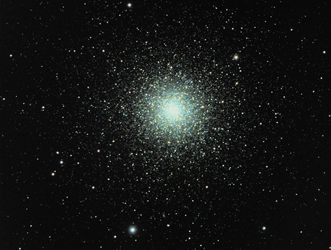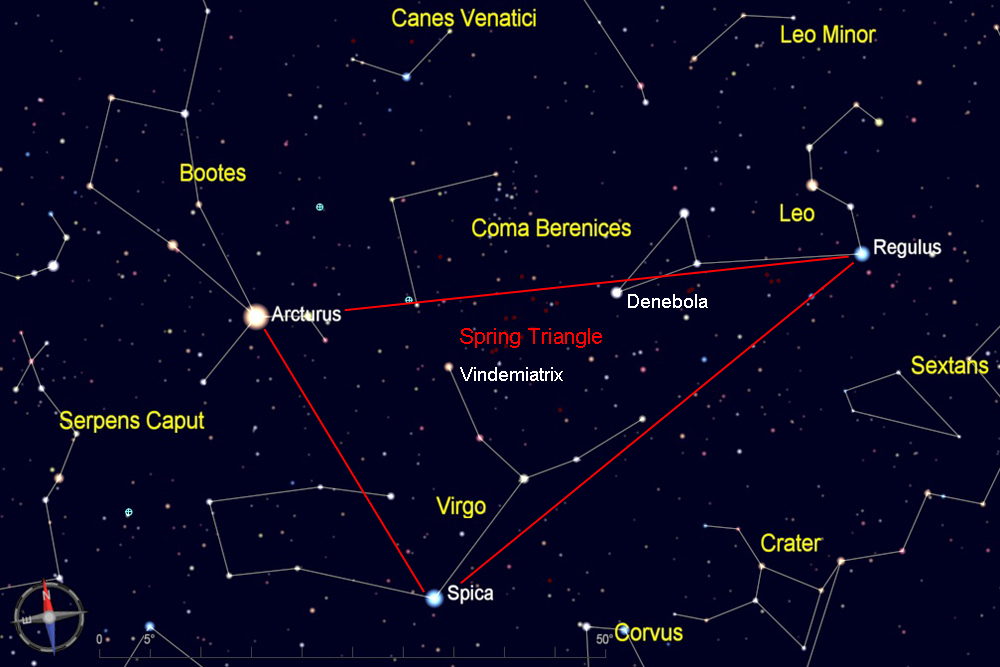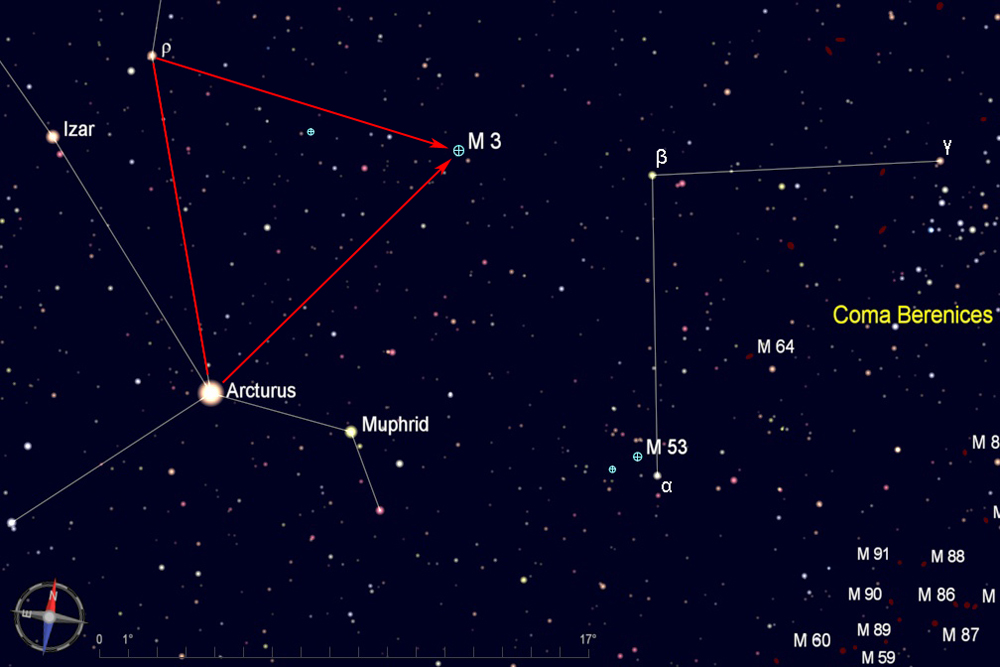| At magnitude 6.3, Messier 3 is
one of the brightest globular clusters in the sky, and one of the most impressive to observe with an amateur telescope. It is about 33,000 light years away and contains about half a million stars. It has a
very dense center. Medium to large telescopes will resolve countless stars around its periphery. |
. |
| Evening visibility: |
April-August |
| Best viewed with: |
telescope |
| |
Printable chart (pdf) |
View larger image |
Directions:
Start by finding the Spring Triangle, which consists of three widely-separated first magnitude stars--Arcturus, Spica, and Regulus. The Spring Triangle is high in the southeast sky in early spring, and in the southwest sky by mid-Summer. (To get oriented, you can use the handle of the Big Dipper and "follow the arc to Arcturus").
For this star hop, begin from brilliant Arcturus (magnitude 0). |
. |
| M3 can be tricky to locate by star-hopping because there are no bright stars nearby. One way to find it, as shown in the chart below, is to visualize an equilateral triangle with Arcturus, ρ (rho) Bootes, and M3 as the three corners. Point your binoculars or finderscope in the direction of this third corner, and you should see two objects close together, a magnitude 6 star and a "fuzzy star" of similar brightness, which is M3. This beautiful globular is well worth taking the time to find. |
. |
| Star charts created with Cartes du Ciel |
| |
| |


